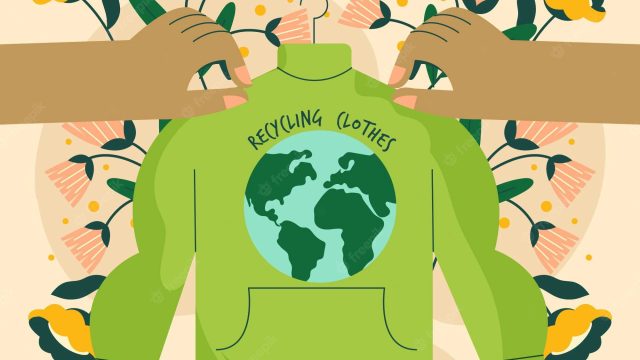Written by Lokesh Rao, Co Founder & CEO Trace Network Labs
The fashion industry is known for its glamour and extravagance, but also its harmful impact on the environment. For years, the industry has been criticized for its excessive usage of resources, high levels of waste, and unscrupulous practices.
But, the industry has been innovative in solving the issue of sustainability by merging fashion and gaming through the metaverse.
The rise of the metaverse, a virtual space that allows individuals to engage in immersive digital experiences, has paved the way for a creative solution that promotes conscious consumerism and sustainable fashion practices.
By incorporating gamification and virtual economies, fashion brands have been able to educate and motivate consumers, encouraging them to make more eco- friendly decisions.
Gamification, a method of applying game mechanics to non-gaming contexts, has been implemented in the metaverse by fashion brands to develop interactive and enjoyable platforms that teach users how to make sustainable fashion choices.
Understanding Gamification
Gamification, the application of game elements and mechanics to non-gaming contexts like storytelling, has proven to be an effective means of engaging and motivating individuals.
Through the integration of gamified experiences in the metaverse, fashion brands can create interactive and enjoyable platforms that educate and empower users to make sustainable choices.
For instance, virtual fashion challenges or quests can be designed to encourage players to experiment with different eco-friendly clothing options or recycle their virtual wardrobe items.
By rewarding players with virtual currency, exclusive virtual items, or unlocking new levels, brands can incentivize users to adopt sustainable fashion practices.
Key Advantages
One key advantage of gamification in the metaverse is its ability to provide users with real-time feedback and data on their choices. By tracking virtual clothing items and showcasing their environmental impact, users can make informed decisions and become more aware of the carbon footprint associated with different fabrics and manufacturing processes.
Virtual economies, on the other hand, have allowed fashion brands to introduce sustainable fashion options and make them more accessible for users. Users can buy, sell, and trade virtual
fashion items, creating an environment that mirrors real-world consumer behavior in a more democratized way. Virtual fashion items crafted from sustainable materials or designed by ethical brands have become highly sought after, driving demand and encouraging users to make
eco-friendly choices.
Furthermore, virtual economies provide an opportunity for fashion brands to explore innovative business models that promote conscious consumerism.
For instance, brands can introduce a rental system within the metaverse, allowing users to lease virtual fashion items for a limited period. This concept promotes sharing and reduces overconsumption while providing a revenue stream for brands.
Additionally, blockchain technology has been implemented to ensure transparency and traceability in virtual fashion transactions, allowing users to verify the authenticity and ethical sourcing of virtual items.
Space for Collective Action
Gamification in the metaverse also offers a space for collective action and community engagement, beyond individual consumption.
Virtual fashion events such as runway shows or design competitions, have become popular, rallying users around sustainable fashion causes and inspiring them to take part in collaborative efforts.
By fostering a sense of community and shared purpose, brands can tap into the power of social influence, spreading awareness and driving sustainable fashion choices beyond the metaverse.
The metaverse, however, is not a complete solution to all sustainability challenges. Virtual experiences should serve as a complement to real-world efforts for sustainable fashion choices rather than a replacement.
Nevertheless, the metaverse offers a unique platform to reach a global audience, particularly younger generations who are already comfortable navigating digital environments.
Fashion brands can leverage gamified experiences and virtual economies to inspire and empower individuals to make more sustainable choices in their everyday lives.
Fostering Sustainable Future
Fashion gamification in the metaverse can revolutionize the way we approach sustainable fashion choices and promote conscious consumerism. The metaverse offers new avenues for creativity, innovation, and collaboration, empowering individuals to make a positive impact on the environment virtually and in the real world.
With the help of gamified experiences and virtual economies, fashion brands can educate and incentivize users to adopt eco-friendly practices while fostering a sense of community and shared responsibility.






